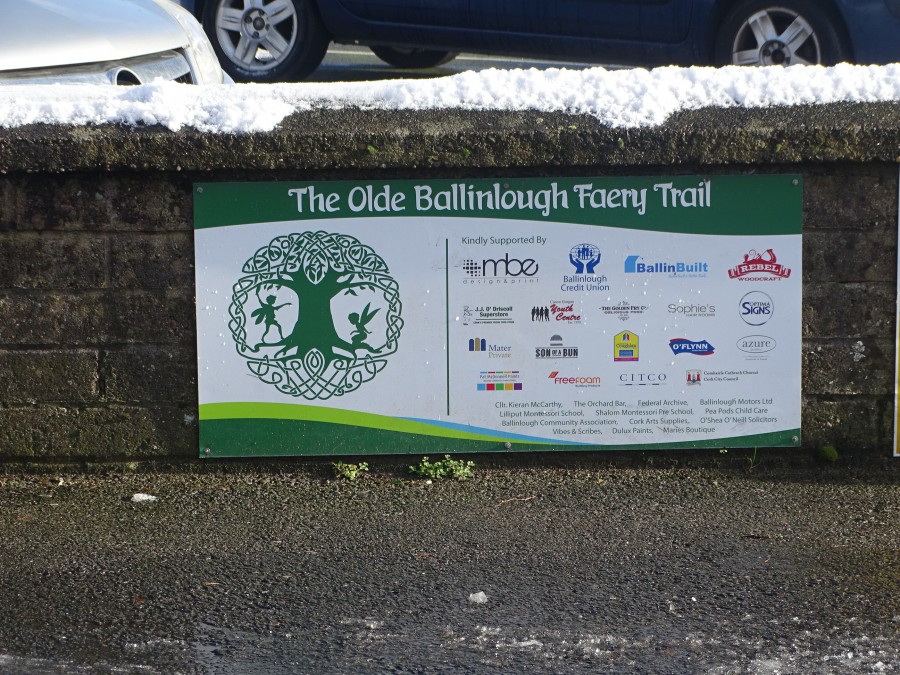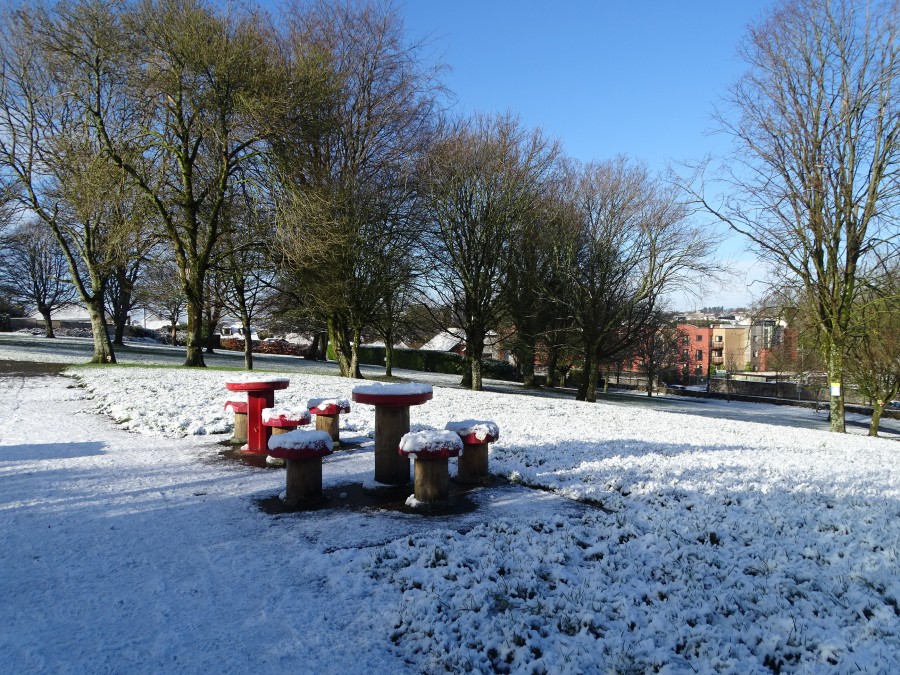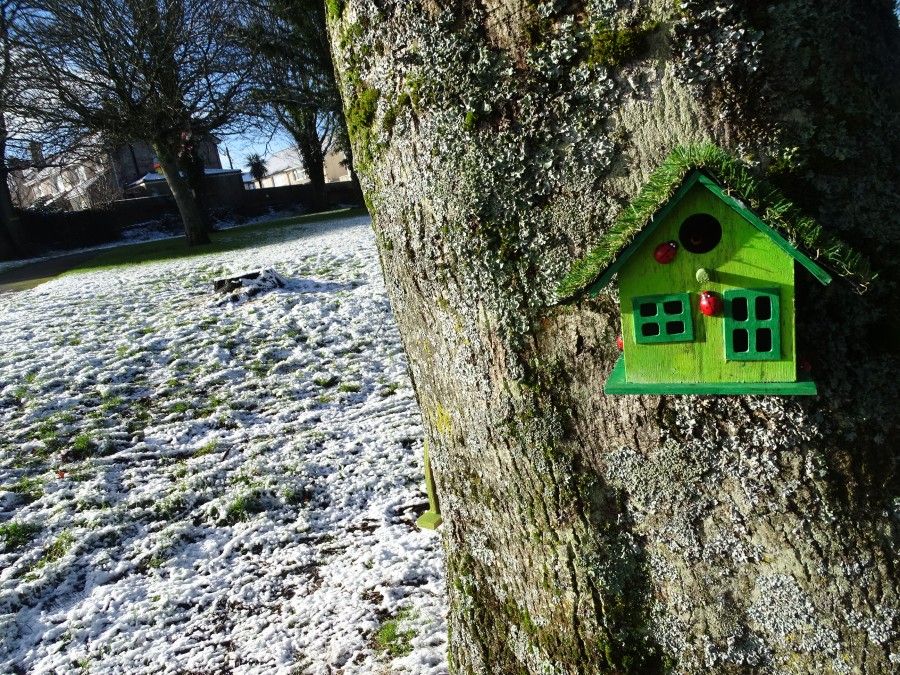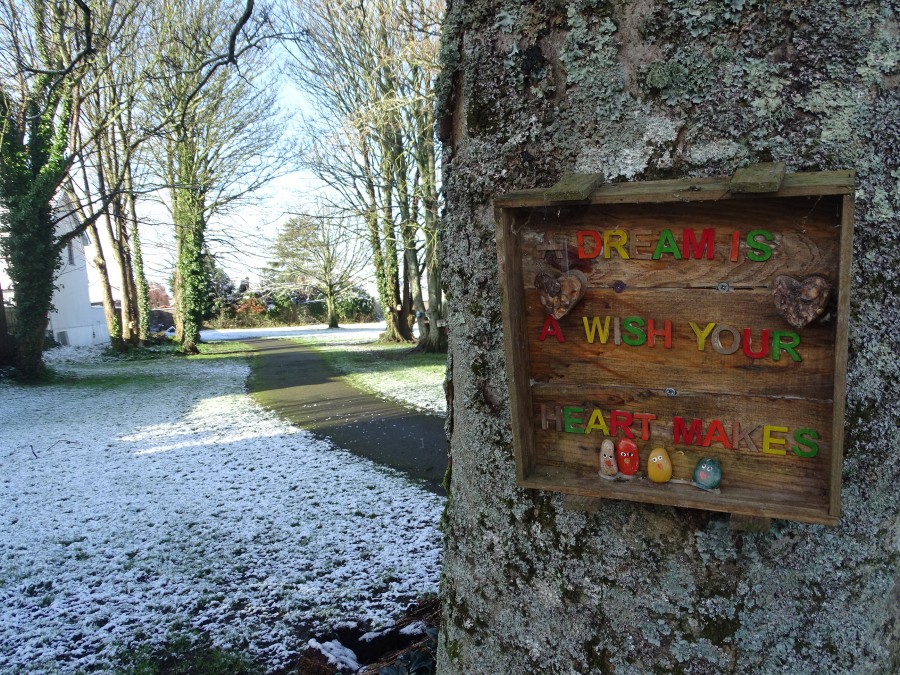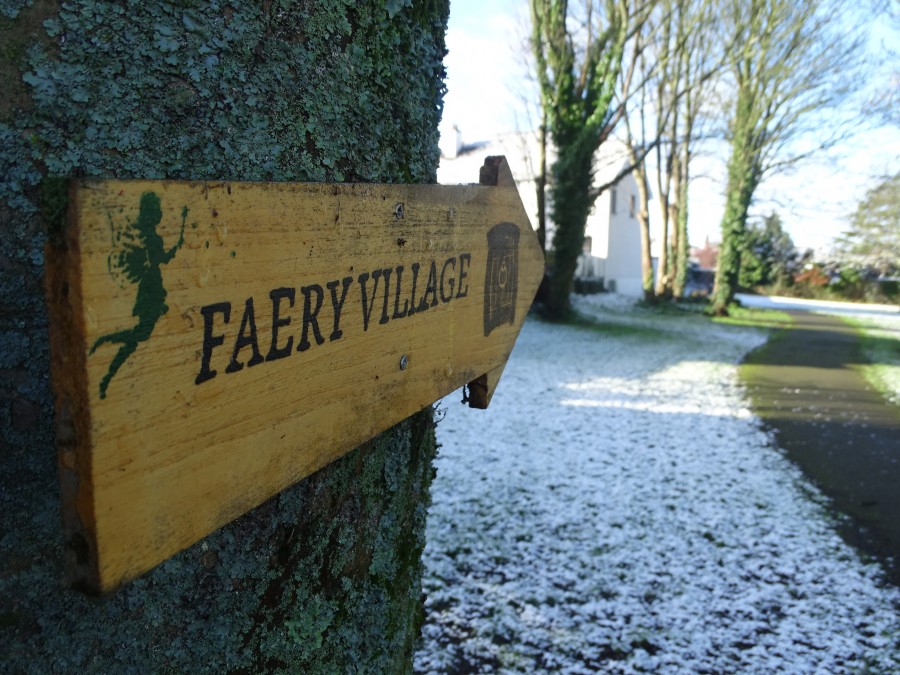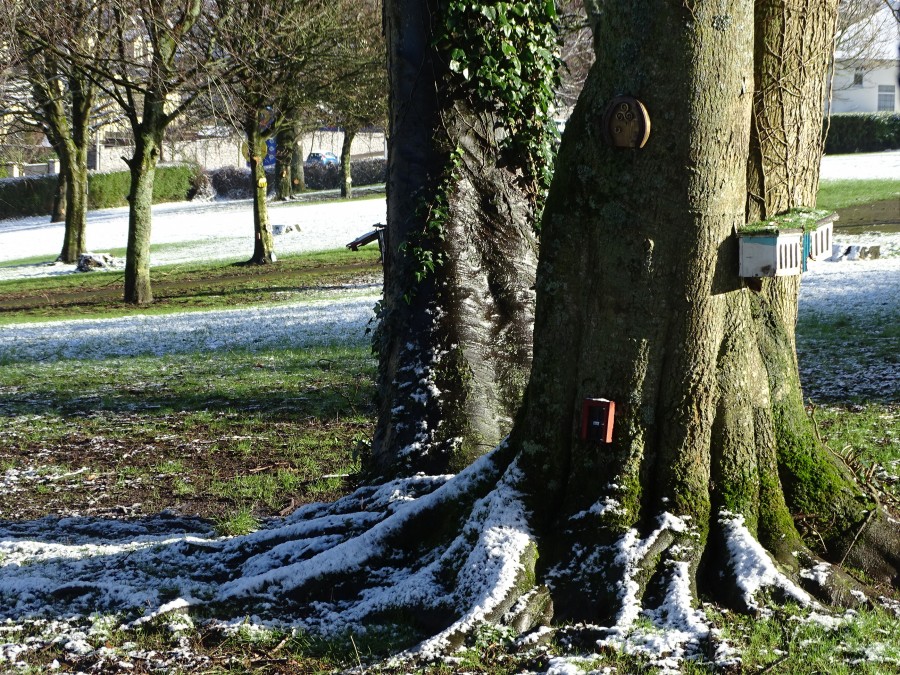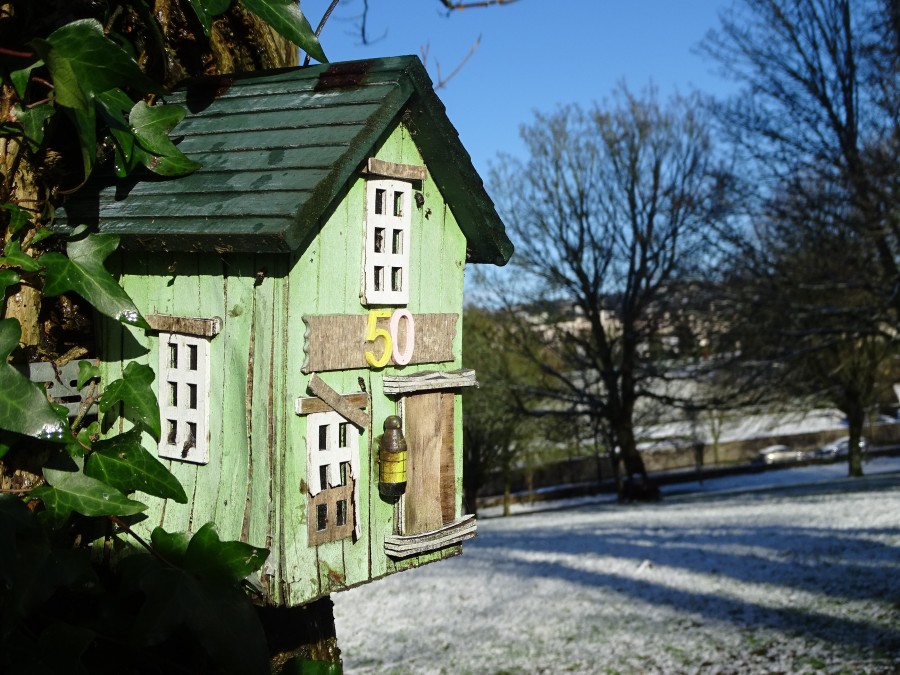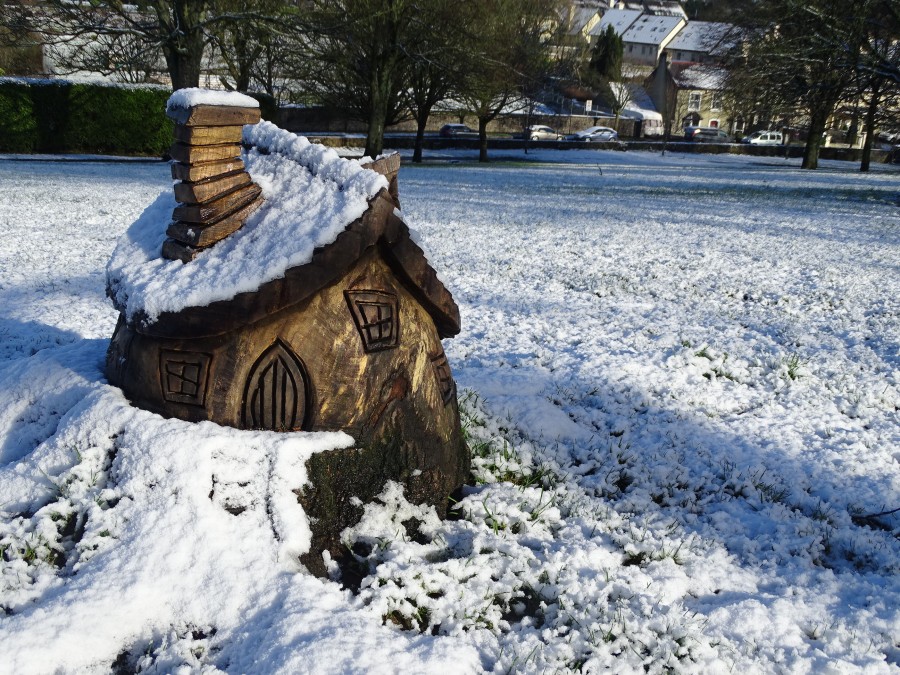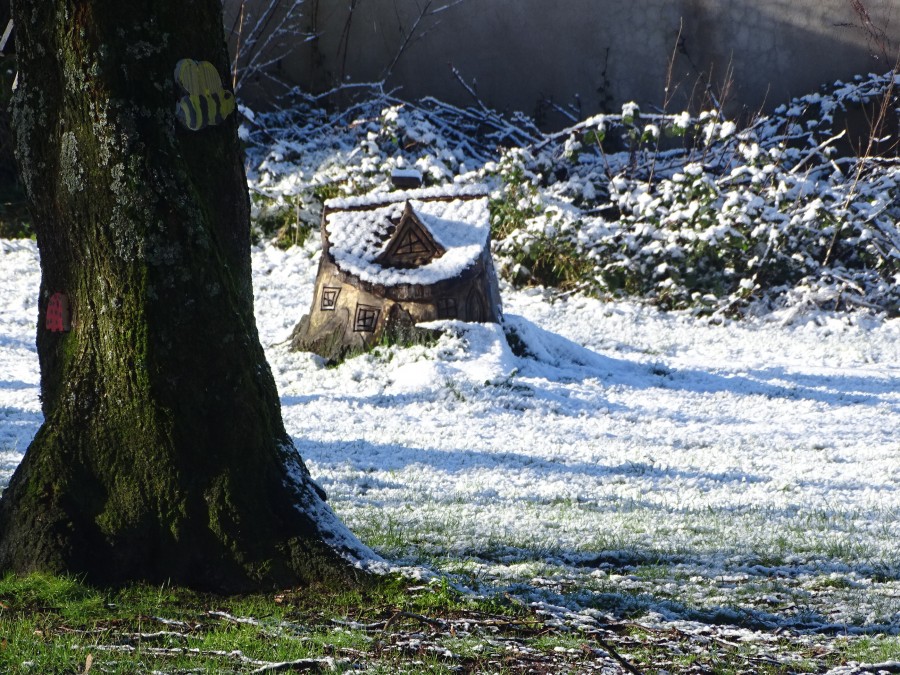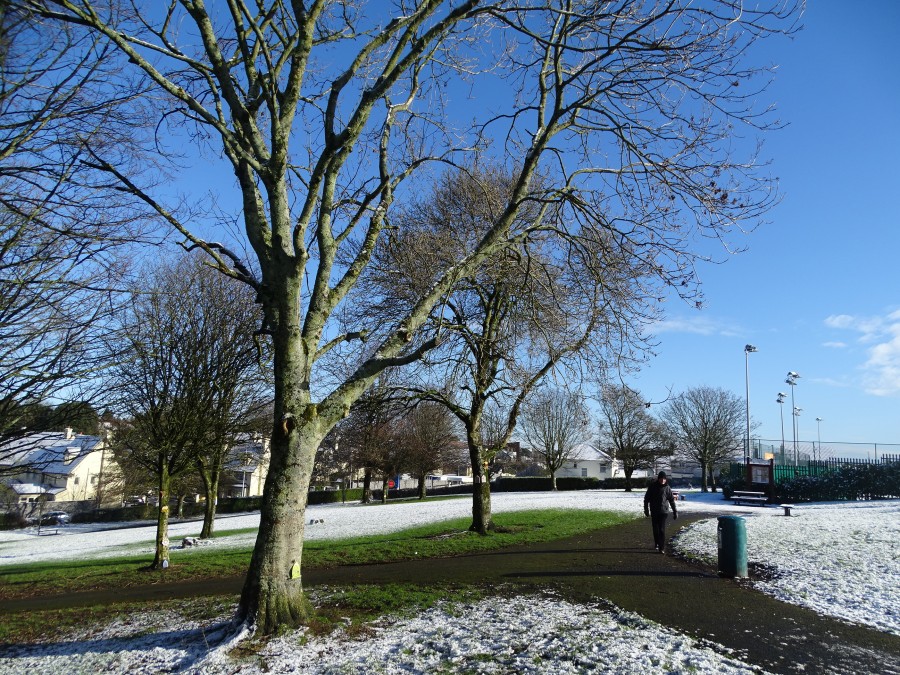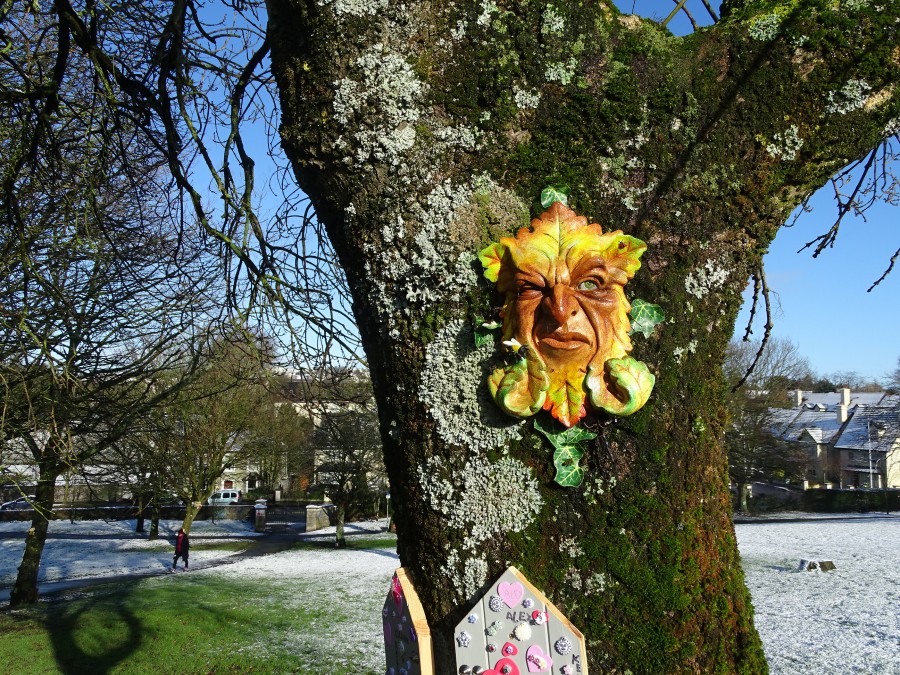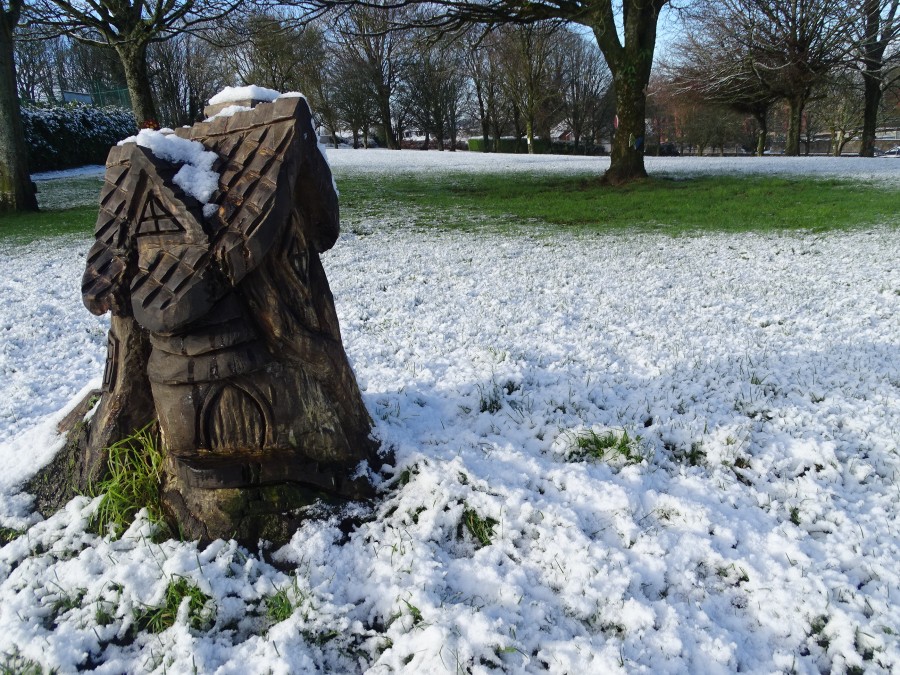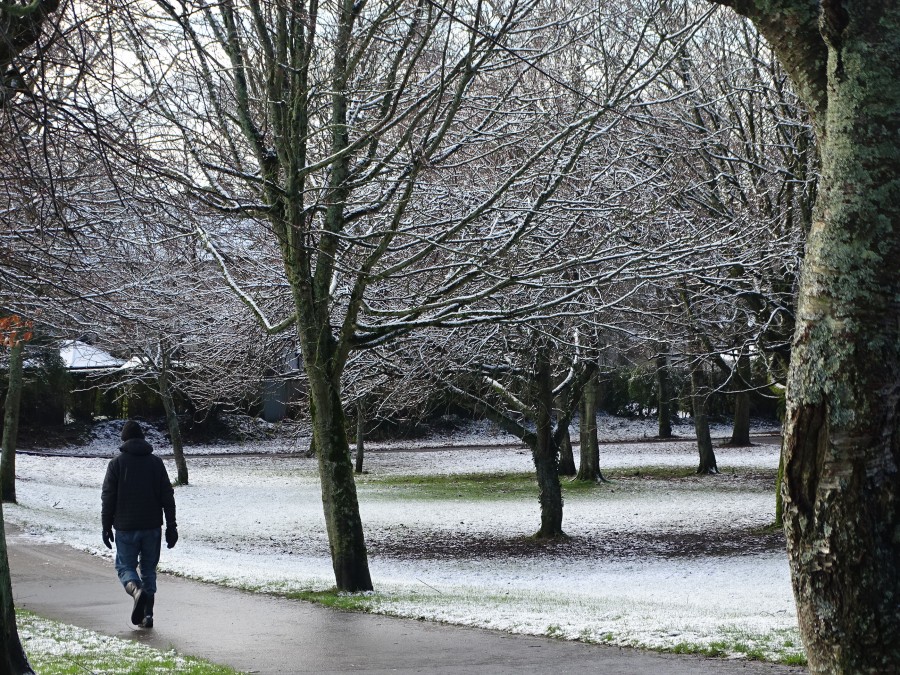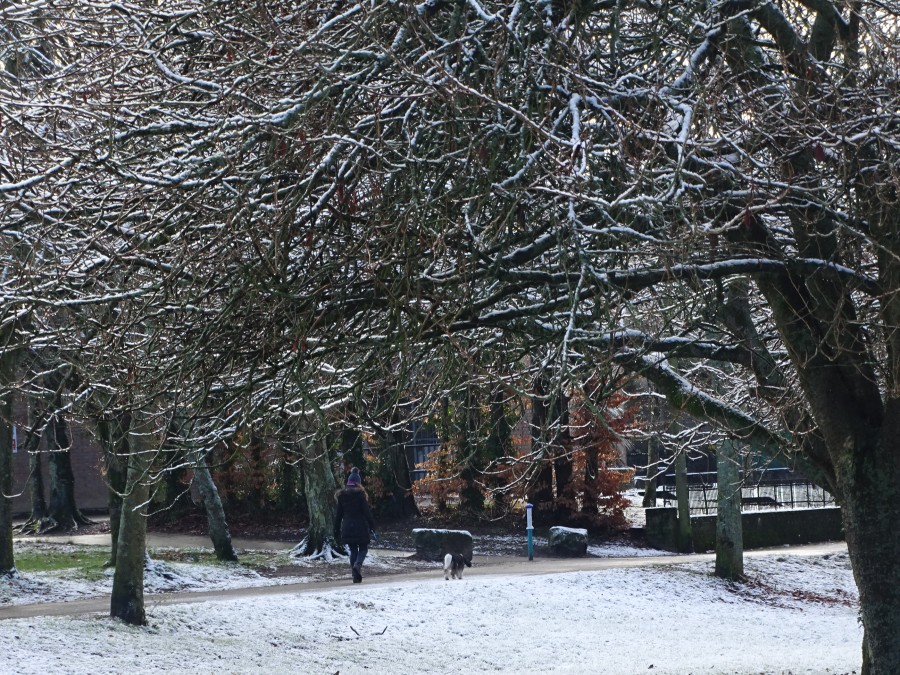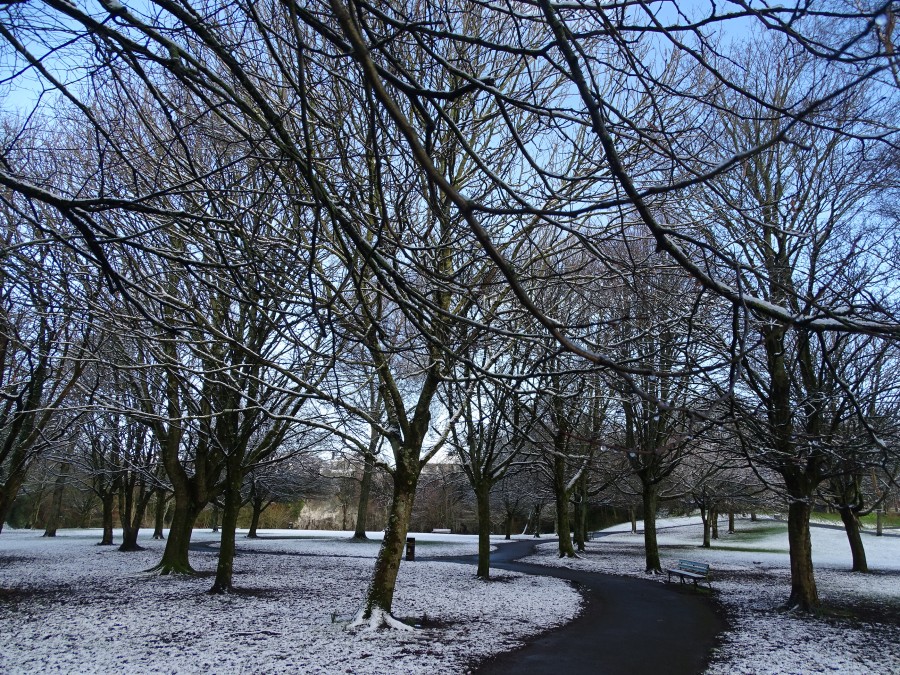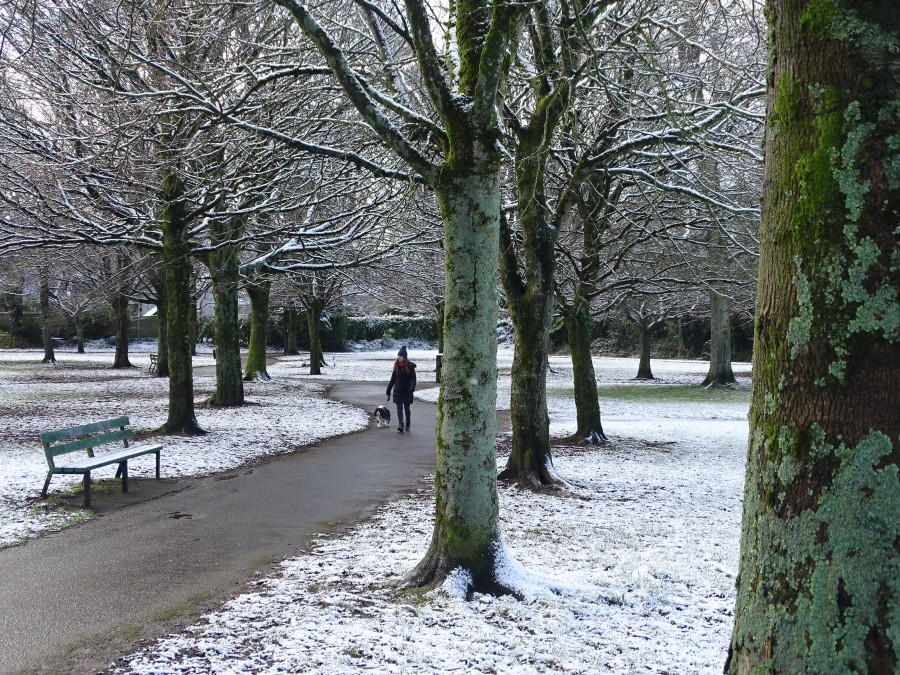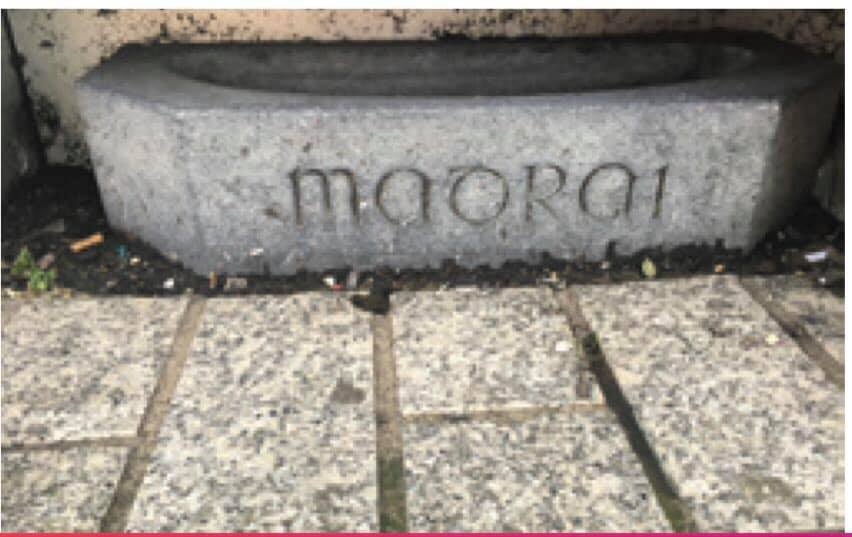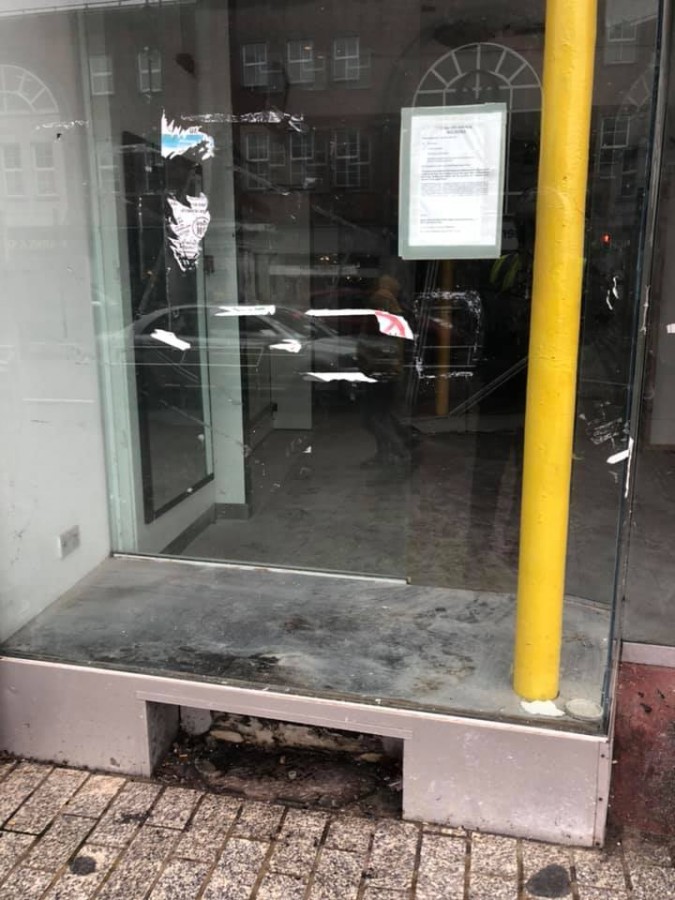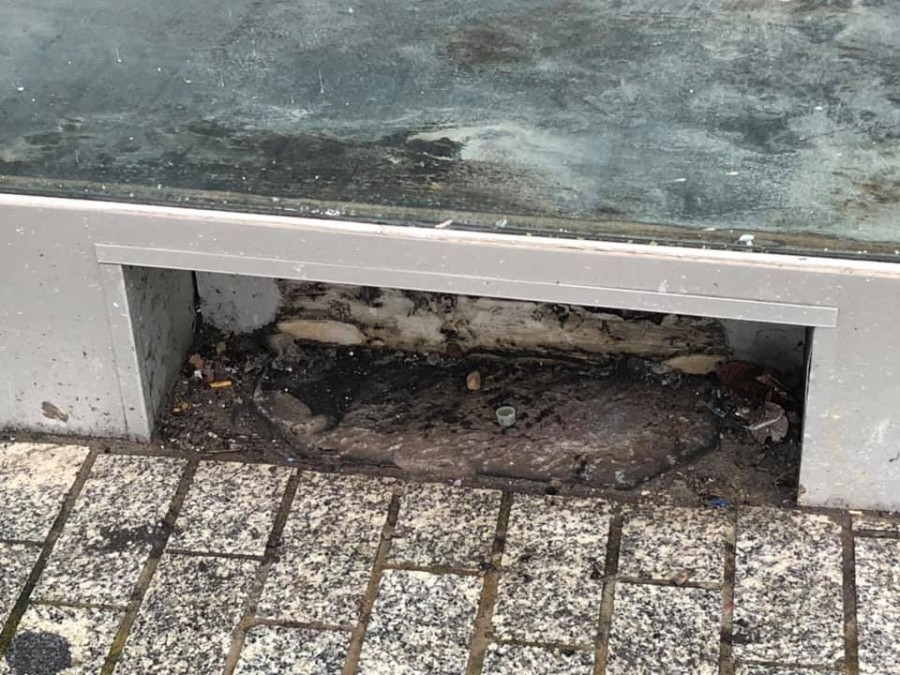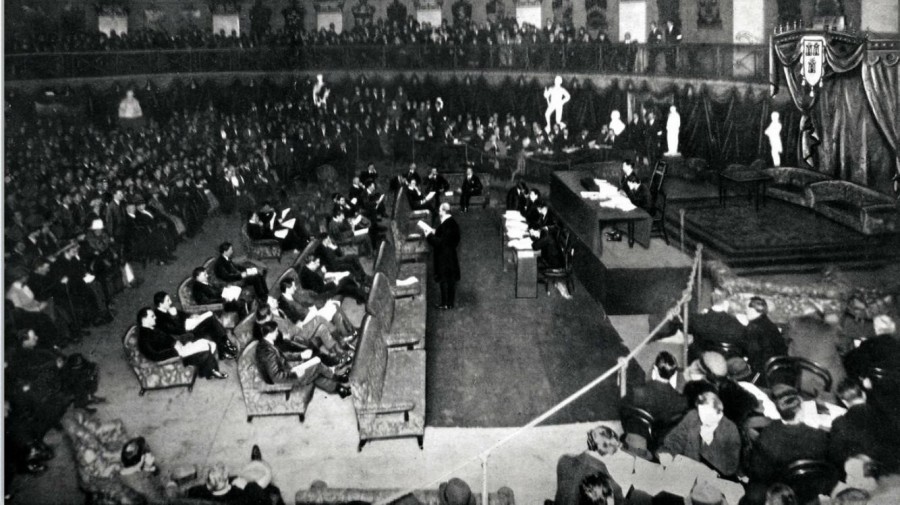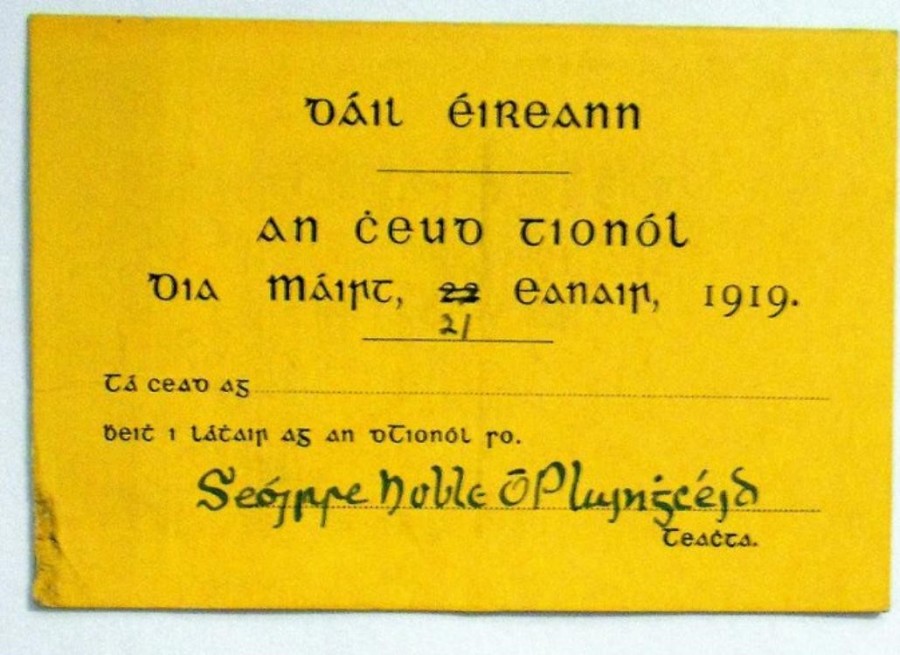Melting Snow Landscapes, Japanese Gardens, Ballinlough, 30 January 2019
Kieran’s Question to CE, Cork City Council meeting, 28 January 2019
Question to CE
To ask the CE on a concept proposed in 2008/09 of a 50m swimming pool for Cork. It was noted to Council at that point in time that progress would be made on exploring the concept more when the economic climate would pick up again – has any progress been made on the idea todate in the ten year interval? (Cllr Kieran McCarthy)
Seamus Murphy Dog Trough found, Friday 25 January 2019, 4.30pm
Update on Seamus Murphy dog trough:
Between the Garda press office & Council officials, they have noted it Has been found & will be returned to its location in the coming days; v little other info has been made available; Garda enquiries are to continue said short Garda brief.
Stolen Dog Trough made by Seamus Murphy, St Patrick’s Street, 24 January 2019
Press Comment:
“I am very saddened and furious to see this form of cultural vandalism; It is a well known piece of heritage in Cork; it has been there for nearly 60 years and it has not been inferred with in six decades- it is a disgrace that someone would come along and say “let’s knick this”- the piece has huge cultural value. Someone trying to sell this piece will be unable to because of how well written about this trough is on social media.
To remove this trough would have required some machinery as it was based in concrete- some one must have seen this trough being lifted and should report it to Anglesea Street Gardai. There is intense CCTV in the area and that should be able help identify and be able to track the culprits from St Patrick’s Street to their residence”.
Kieran’s Our City, Our Town, 24 January 2019
Kieran’s Our City, Our Town Article,
Cork Independent, 24 January 2019
Tales from 1919: Proceedings of the First Dáil Éireann
Three minutes before the time announced for the beginning of the proceedings of the first Dáil Éireann on 21 January 1919 Count George Plunkett, attended by his colleagues entered the Round Room of the Mansion House, Dublin (continued from last week’s column). They proceeded to their seats. The audience rose and indulged in loud and prolonged cheering.
A roll call of members, available from the Oireachtas archives, lists the Sinn Féin MPs in attendance: Seán T O’Kelly (College Green), P O’Maile (Connemara), J J Walsh (Cork City), Michael Collins (South Cork), Seán Hayes (West Cork), Eoin MacNeill (Derry City and National University), Joseph O’Doherty (North Donegal), Peter J Ward (South Donegal), Joe Sweeney (West Donegal), George Gavin Duffy (South Dublin), Philip Shanahan (Harbour Division Dublin), Richard Mulcahy, Clontarf, Dublin, Michael Staines (St Michan’s, Dublin), Alderman Tom Kelly (St Stephen’s Green, Dublin), Piaras Beasley (East Kerry), Dr John Crowley (North Mayo), Donal Buckley (North Kildare), Con Collins (West Limerick), J J O’Kelly (Louth County), Eamonn Duggan (South Meath), Kevin O’Higgins (Queen’s County), Count George Noble Plunkett (North Roscommon), Harry Boland (South Roscommon), James A Bourke, (Mid-Tipperary), P J Moloney (South Tipperary), Cathal Brugha (Waterford), Roger M Sweetman (North Wexford, Dr Jim Ryan (South Wexford), and Robert C Barton (West Wicklow).
Journalists from papers such as the Cork Examiner and the Irish Independent jotted down the proceedings, which were passed by a press censor. On the motion of Count Plunkett, seconded by Mr P O’Maile, Mr Cathal Brugha was moved to the chair amidst much applause. He spoke about doing important work, “the most important work that had been done in Ireland since foreigners landed in that country”. Continuing he noted: “It is also a holy work. The people of Ireland have hope and trust in God, and for that reason they might humbly ask God to give them help in the work that they had undertaken”. He then asked Fr Michael O’Flanagan to give a blessing on their work.
The Chairman then called the names of all the Irish Parliamentary representatives invited to assist the establishment of the Dáil Éireann. The Chairman highlighted that invitations had been sent to all persons elected for Irish constituencies in the December general election of 1918. There were no replies when the names of Unionist members were called and in the case of the Sinn Féin members in prison the answer “in gaol” was given”.
Mr Seán T O’Kelly then proposed the adoption of a temporary constitution. He said this constitution was a very simple one; “all the members of the Dáil have already got it in their hands, it did not require any long advocacy of it from me. It is sufficient for the time being for the purpose which the Dáil holds in view, namely, to make a permanent Republic in Ireland”. Sean Hayes seconded the motion, which was unanimously carried. The Chairman read the Declaration of Independence to be endorsed by the Dáil. The declaration was read in English by Mr E J Duggan, and in French by Mr George Gavin Duffy. It was accepted by each MP present.
On the motion of Mr O’Maillie and seconded by Dr Jim Ryan, Eamon De Valera, Count Plunkett, and Arthur Griffith were appointed delegates to the Peace Conference.
Mr J J O’Kelly read an address to the “Free Nations of the World”. Count Plunkett read the address in Irish. Mr John MacNeil, who proposed the adoption of the address, said they were not asking the people of other countries to establish a Free State in Ireland, because he deemed that the state had already been established. All they asked was that it should be recognised and guaranteed by the “Powers” which were assembled in Paris to settle the peace of the world and granted the rights of small nations. Mr J J Walsh from Cork City seconded, and the motion was unanimously carried.
The constitution of the Dáil was then read and also agreed to. It provided that the Dáil should have full legislative powers and should consist of members elected by the people from the existing constituencies; “Full Executive power shall reside in the Ministry, which shall consist of a Prime Minister selected by the Dáil, and four Ministers, namely, Ministers of Finance, Foreign Affairs, Home Affairs, and Defence. The Prime Minister shall nominate the four, and have power to deprive them of office. A Ceann Comhairle (Speaker) shall be selected, for the year by the Dáil, ‘ or a substitute if he is not present. The Ministry shall receive whatever money they require by vote of the Dáil and will be responsible to the Dáil for the monies voted”. Provision was made for the-auditing of the accounts, and the Constitution provided that was temporary, and could be changed by written resolution submitted on ten days’ notice.
Mr Piaras Beasley read in Irish, and Alderman Tom Kelly in English, the democratic programme of social and economic principles. Mr Richard Mulcahy moved the adoption of the programme. Mr Con Collins seconded the motion which was carried. The sitting was then adjourned till the following day when Standing Orders were to be under consideration. As the members of the Dáil rose in their places for the adjournment they were loudly applauded, and the cheering was renewed by the crowd outside the Mansion House when they left the building. The crowd then quietly dispersed. At night a reception was given by Mr Cathal Brugha, Speaker of Dáil Éireann.
Missed a column last year, check out the indices at Kieran’s heritage website, www.corkheritage.ie
Kieran is also showcasing some of the older column series on the River Lee on his heritage facebook page at the moment, Cork Our City, Our Town.
Caption:
981a. Archival documents on display in Cork City Museum showcasing the organisation of the first Dáil Éireann in 1919 (picture: Kieran McCarthy)
Cork City Council Sports Capital Grant Scheme 2019
Cork City Council through its Sports Capital Grant Scheme seeks to assist local voluntary sporting organisations in developing and enhancing sports and physical recreation facilities throughout the City. The scheme is aimed at providing grant aid to projects that are directly related to enhancing facilities and must be of a capital nature.
The scheme is not intended as an alternative to any Department Sports Capital Grant Scheme or other sources of funding, but will complement any such scheme, possibly helping with local contributions to satisfy criteria of other funding agencies, or assisting with funding where certain works are not covered by other grant schemes.
A sum of € 270 k has been provided for the Scheme in 2019.
Scheme Details:
Minor Sports Grants (Under 5k)
This Scheme will allow for minor capital grants towards enhancement of premises, pitches etc., as well as allowing for the purchase of non personal sports equipment that will be used for at least five years.
Major Sports Grants (€5k – €10k)
This Scheme will allow for capital grants to develop sport and active recreation facilities throughout the City
Conditions of the Grant Scheme:
• Grant applications
The grant application must be from a local sporting organisation.
• The grant applicant must be located within the City Boundary or provide evidence that the majority of those using the facility live within the City area as of Jan 1st 2019.
• The grant application form must be completed in full with supporting estimates/quotations attached.
• The applicant must have title to the property which they are enhancing, have a licence or lease greater than 7 years or provide a letter of comfort from the landlord in relation to title.
(ii) Proposed Works
• Applicants must demonstrate that the proposed works meet a sporting need in the area and are of a capital nature.
• Provide costings and time line for project.
(iii) Other
• Provide evidence of any other funding, evidence of own funding and copy of previous two years accounts.
• Undertake to refund the City Council for any grant given if the facility changes use or ceases to operate.
• An acknowledgement sign may be required to be erected where appropriate.
How to apply:
Applications forms are available from the Recreation & Sport Section , Cork City Council , City Hall Cork-.
T.:- 021- 4924729, E mail recreation@corkcity.ie or by downloading from the City Council’s website www.corkcity.ie/ Completed forms with all supporting documentation, addressed to the Administrative Officer, Recreation & Sports Section , must be returned before 5pm, 15 February 2019.
Cllr McCarthy: Tramore Valley Park will be Recreational Jewel in the Expanded City, Update January 2019
Sustained pressure to open Tramore Valley Park may yield “light at the tunnel” before the summer of this year, according to Independent Cllr Kieran McCarthy.
In response to a question on the current status of the Park by Cllr McCarthy at the last City Council meeting, it was revealed that works are well advanced to upgrade access and egress from/to the South City Link Road, enhance public lighting, increase car parking spaces and, associated landscaping. They are scheduled for completion mid to late April 2019.
On the way into the site from the South Link the City Council are segregating the traffic that is going to the recycling facility from those who will use the park. At the moment, there is one lane in and one lane out to the South link and the Council wish to put a second lane that will allow two lanes out onto the South Link.
The Chief Executive in her answer to Cllr McCarthy noted; “The park is scheduled to open at the latest in the week ending Sunday 12th May, 2019”.
Cllr Kieran McCarthy noted; “vast amounts of public money has been invested to transform this former landfill into a c.160 acre public park. I remain committed to putting pressure on the officials to open this significant park area, which will serve all of the city and beyond its boundaries. It will be a recreational jewel in the expanded city later this year”.
“It will be great to see the park opened in its first phase ensuring that family, community and park life all remains at the heart of a bigger city centre. It will be the equal of the Ballincollig regional park in the city. Family and community life will be enhanced by the opening of this enormous resource”, highlighted Cllr McCarthy.
Kieran’s Our City, Our Town, 17 January 2019
Kieran’s Our City, Our Town Article,
Cork Independent, 17 January 2019
Tales from 1919: Preparations for the First Dáil Éireann
“Within recent years no such interest has been centred in any function in the capital of Ireland as that associated with the Sinn Féin Constituent Assembly, which commenced its deliberations in the Mansion House this afternoon. For some time past the opening sitting of An Dáil Éireann (to give the function its Irish title) has attracted a considerable amount of publicity, and all forms of rumours as well as speculations have been circulated with regard to it. In Sinn Féin circles, of course, the function was regarded with the utmost interest, but it is no exaggeration to say that the people of the country, as well as those of Great Britain and many other nations, anxiously awaited its deliberations” (undocumented press reporter, passed by the Press Censor, Ireland, 21 January 1919).
The 21 January 2019 coincides with the centenary commemoration of the assembly of 28 (of 73) Sinn Féin MPs at Dublin’s Mansion House and their declaration of the first Dáil Éireann. The Cork Examiner and Irish Independent provide much detail on the event. Some hours before the opening of the proceedings, crowds began to assemble outside the Mansion House, and along the different thoroughfares adjoining the official residence of the Lord Mayor. It became apparent that the attendance of the general public would reach large proportions. Stewards on the streets were in place to make sure public congestion was avoided. Vehicular, tram, and pedestrian traffic along Dawson Street were not impeded to any great extent.
Admission was by ticket and ticket-holders were formed into a queue – a system that was rigidly enforced. Those who did not possess tickets, lined the footpaths in the Mansion House quarter waiting for the arrival of the Republican representatives, and extended to each a hearty applause and cheer. The crowd increased as the afternoon advanced. Photographers, film and camera operators were plentiful.
From the windows of houses in Dawson street several sightseers were accommodated with seats, and amongst those that were observed were Colonel W Edgeworthe Johnstone, Chief Commissioner of Dublin Metropolitan Police and Brigadier-General Sir Joseph Byrne, Inspector-General RIC, as well as some military officers who followed with a deep interest the happenings on the street. Several detectives in plain clothes mingled with the crowd or took up positions adjacent the entrance to the Mansion House. However, there was no interference with the Sinn Féin members of Parliament or public or the proceedings within the building.
Early visitors who proceeded through Grattan Street to the Mansion House were surprised to find that the popular street, which adjoins Dawson Street, was decorated with Union Jacks and the flags of the Allies. The flags were exhibited in connection with an entertainment provided in the Mansion House in the forenoon for expatriated prisoners of war from Germany. This entertainment did not conclude until about ninety minutes prior to the commencement of the Constituent Assembly proceedings, and the soldiers, who were attached to the Royal Dublin Fusiliers, left the building in presence of the queue and large crowd gathered in Dawson street. Headed by their band, and accompanied by other soldiers and civilians, the soldiers marched towards the centre of the city without any incident taking place.
In accordance with arrangements for the Mansion House, the members of the Dáil Éireann assembly, as well as the Press representatives, who were in attendance from many parts of the world, were admitted by the main entrance, and the public ticket holders by the side entrance. The sitting of Dáil Éireann was devoid of all ceremonial symbolism, and there was no Volunteer display outside or inside, the Mansion House. A majority of the Sinn Féin members of Parliament were in jail or in America. The Round Room of the Mansion House, which was spacious, was allotted to the assembly, and every part of it was quickly filled. The portion of the building underneath the lecture platform was occupied by the Sinn Féin MPs, while the galleries and other parts of the room were allotted for the accommodation of the public.
The attendance of the general public was large and representative, and included Rev M O’ Flanagan, Mrs Maud Gonne McBride, numerous Catholic clergymen, an Australian Catholic clergyman in uniform, a number of American Naval officers, but the labour movement had only a few representatives in the gathering.
Three minutes before the time announced for the beginning of the proceedings, Count Plunkett, attended by his colleagues, entered the Round Room. As they proceeded to their seats the audience rose and indulged in loud and prolonged cheering. There was no delay in proceeding with the business of the meeting, which was conducted in the Irish language, with the exception of the announcement in English of some declarations after they had been first read in Irish. It was evident that the business transacted had been carefully prepared, as each of the Sinn Féin MPs was provided with printed matter, which they read in the order in which they were called upon to do so. The sitting occupied about two hours and was devoid of any incident except the enthusiasm which greeted the declaration of the Irish Republic.
More next week…
Missed a column last year, check out the indices at Kieran’s heritage website, www.corkheritage.ie
Kieran is also showcasing some of the older column series on the River Lee on his heritage facebook page at the moment, Cork Our City, Our Town.
Captions:
980a. Photograph of first Dail Éireann meeting, 21 January 1919 (National Library, Dublin)
980b. Public admission ticket to first Dail Éireann meeting, 21 January 1919 (Capuchin Annual, 1969, National Library, Ireland)
Kieran’s Question to CE and Motions, Cork City Council Meeting, 14 January 2018
Question to CE:
To ask the CE for an update on progress on Tramore Valley Park ? (Cllr Kieran McCarthy)
Motion:
That Cork City Council calls upon Minister Zappone’s Department to acknowledge Adoptee Identity Rights and allow Adoptees access to their own information on Health and Heritage in line with the equality and personal autonomy rights of other citizens (Cllr Kieran McCarthy)
